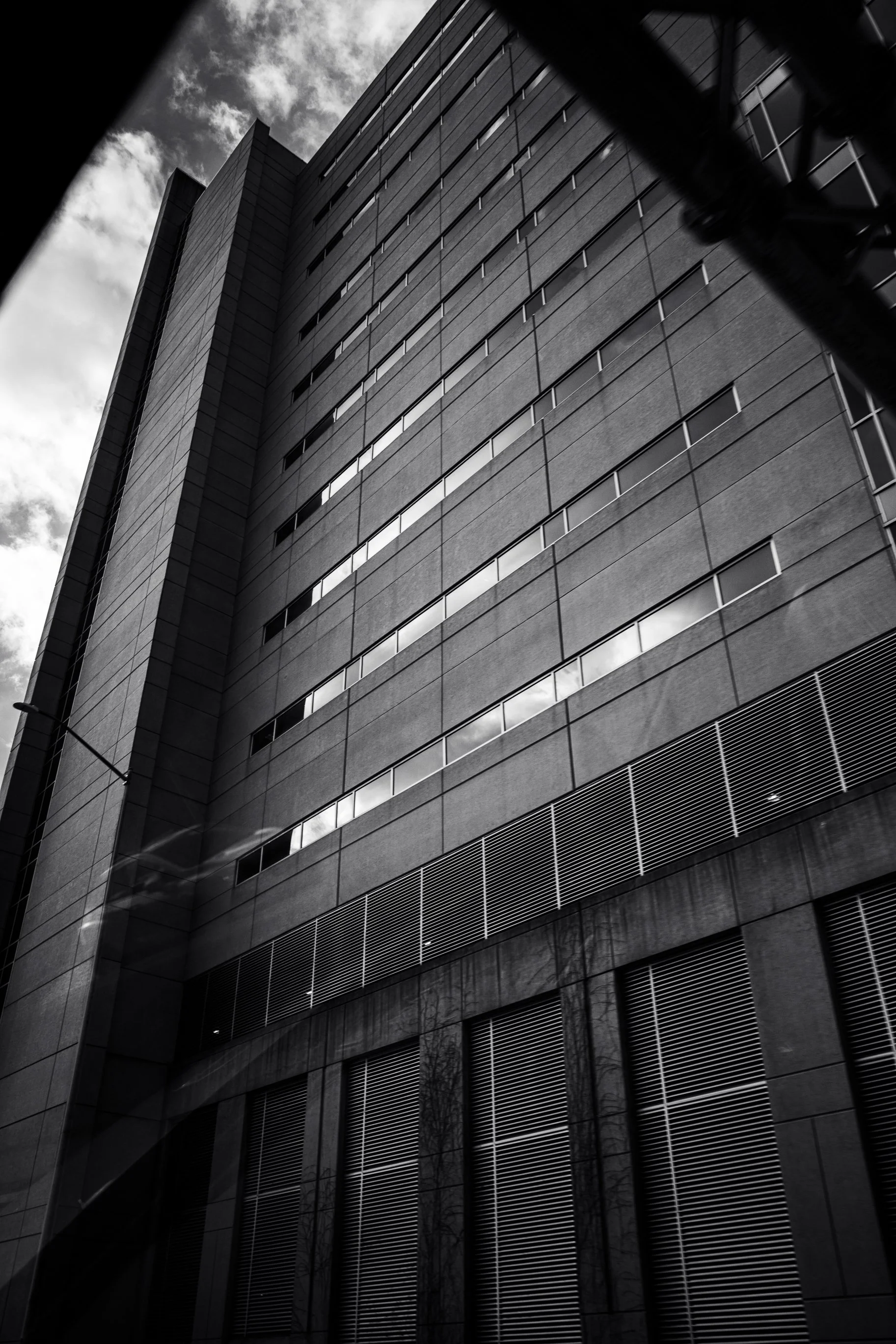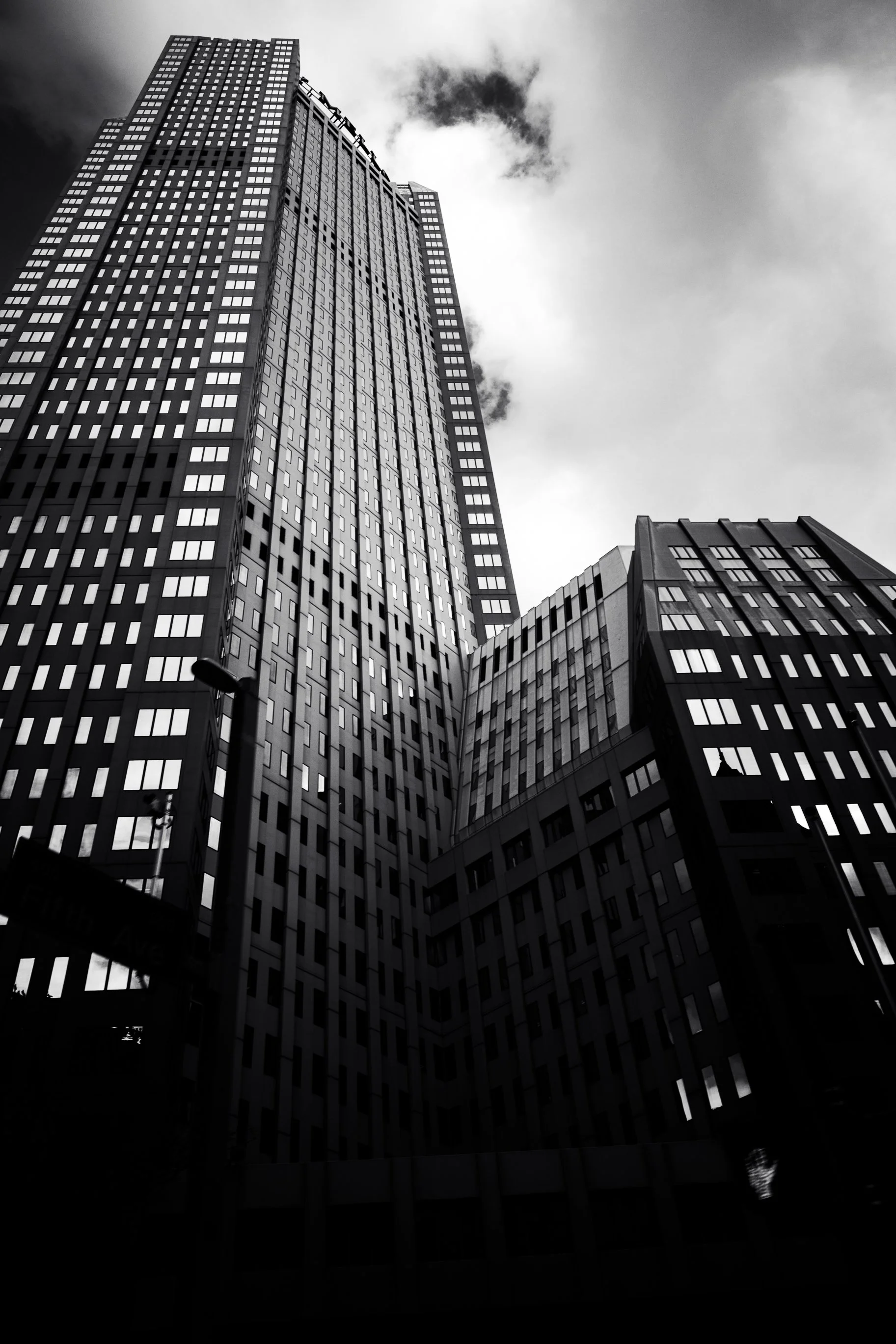Concrete, Light, and the Psychology of Awe
A building that feels like it breathes. Rows of windows reflecting a sky that never sits still. Light caught in a grid.
There is something about downtown buildings that changes the way your mind works. Most people think of the city as noise and movement. But if you slow down and look up, the city becomes something completely different. Psychologists talk about awe as a mental reset. It is the feeling you get when you look at something larger than you can fully process. Your brain pauses, your breath drops into your chest, and for a moment you become aware of yourself in a bigger world.
Steel cutting the sky. Lines stacked on lines. A moment where the city feels taller than your thoughts.
Architecture can trigger that same shift. It is not just the size. It is the shape, the lines, the repetition, the angles that tower over you while you stand still. These buildings have been here for decades. Some longer. They carry history whether we pay attention or not. And when you walk under them, you do not just see them. You feel them.
I spent time downtown and caught myself looking up more than at anything on street level. That simple act changes your psychology. Your eyes move away from screens, away from the next step, away from whatever you are stressed about. When you look up, the posture in your body changes, your neck opens, your breathing slows, and the world feels bigger than whatever is going on inside you.
That is why these photos happened. No plan. No shot list. Just that pull to be present. The sky was low and the light was bouncing around in a way that made the windows glow. I decided to shoot everything in black and white because color felt like it would soften the edges. In monochrome, the buildings show their real personality. You see the grids of windows, the contrast where the shadows pool, the hard cuts where the structure interrupts the sky.
There is a psychology behind black and white too. When you strip color, the brain focuses on form and texture. People think removing color takes something away, but it actually forces the viewer deeper into the scene. You start noticing things you would have ignored. The way the glass reflects the sky. The way the courthouse wall looks colder in grayscale than it ever could in real life. The way the edges of each building lean in on you like they are part of the moment instead of part of the background.
The courthouse building in the last frame says a lot without saying anything. The stone feels heavy. The wall is clean and unbothered. The sign sits there in a way that makes you feel like a witness to something. Places like this can make you more aware of yourself. You stand there and sense how small you are, but not in a defeated way. More in a way that reminds you that life is bigger than everything you obsess over. There is something calming in that. Something grounding.
Photography turns into a kind of self check when you let it. You stop thinking about what you should be doing next. You stop worrying about what someone said or what is coming tomorrow. You focus on light, shadow, texture, timing. Your brain only holds one thing at a time and that is the frame in front of you. It is almost like breathing room.
Cold stone. Quiet weight. A wall that feels like it has heard everything and reacts to nothing.
People talk about mindfulness as if you need to sit in silence to reach it. Sometimes it is just standing under a building and pointing your camera up. The city becomes a mirror. You get to see your own state of mind reflected in steel, glass, and concrete.
These photos are the result of that small reset. A walk, a moment, a shift in perspective. The city watching back while you try to make sense of your own thoughts. And sometimes that is all you need.
If you enjoy architectural or street work, follow my ongoing sets for more. Prints and licensing available on request.


